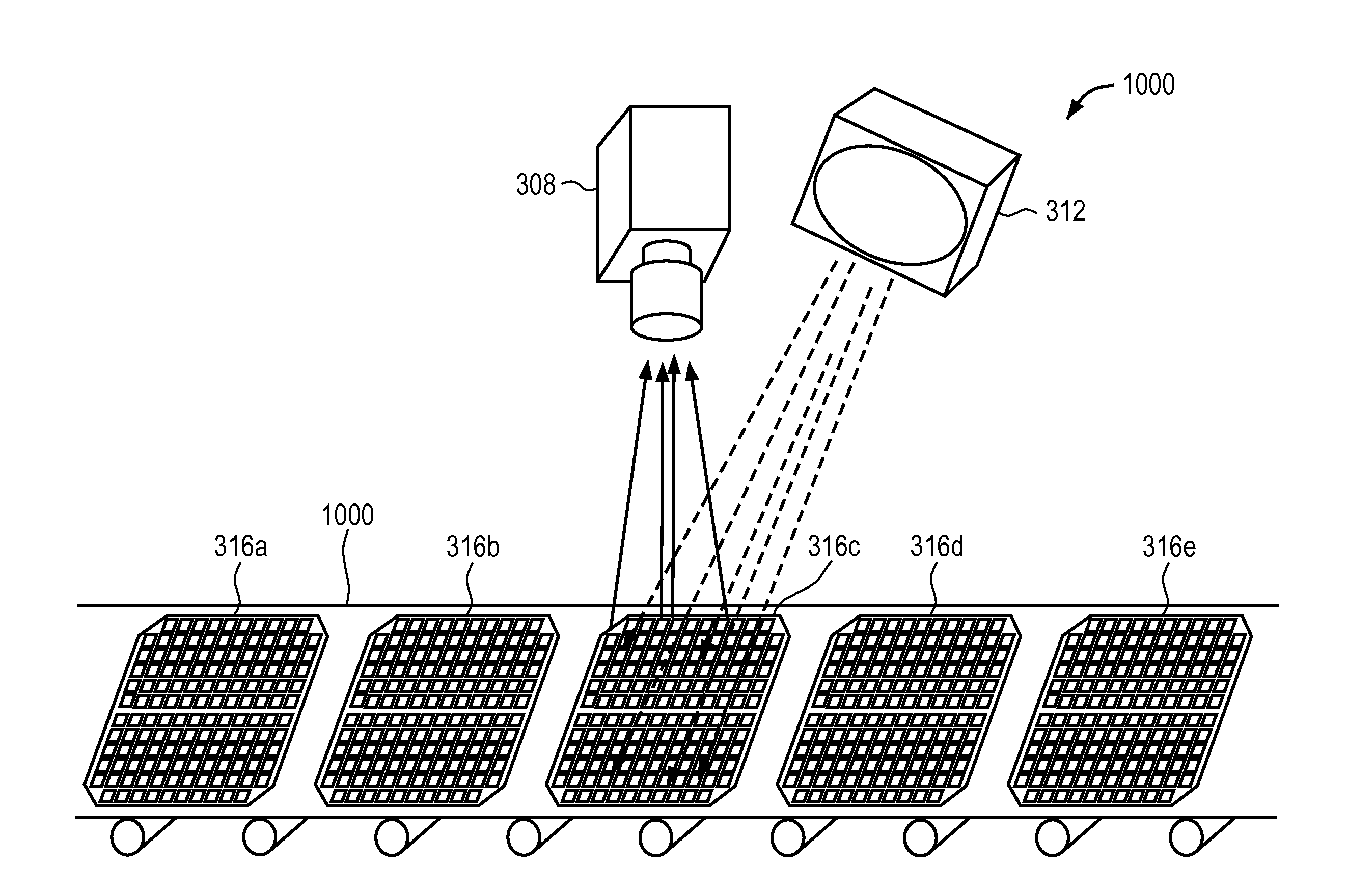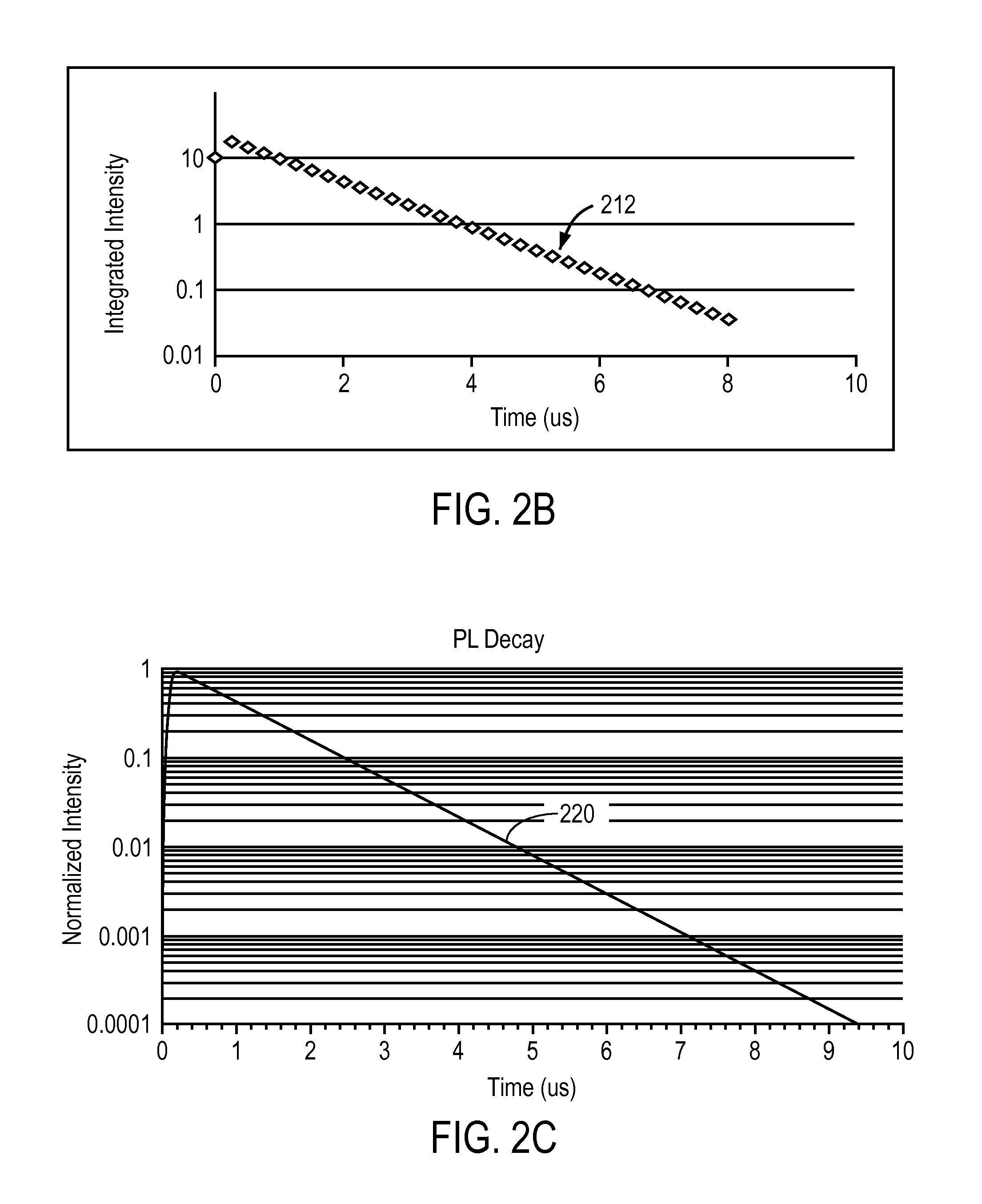Time resolved photoluminescence imaging systems and methods for photovoltaic cell inspection
a photoluminescence imaging and photovoltaic cell technology, applied in the field of time resolved photoluminescence imaging systems and methods for photovoltaic cell inspection, can solve the problems of inability to achieve in-line measurements, image does not have a high resolution, and exposure of at least a few seconds,
- Summary
- Abstract
- Description
- Claims
- Application Information
AI Technical Summary
Benefits of technology
Problems solved by technology
Method used
Image
Examples
Embodiment Construction
[0040]A time-resolved photoluminescence technique is disclosed for imaging and inspecting photovoltaic cells. Photoluminescence intensity is directly proportional to carrier lifetime: −IPL=c Δn=cT, where n is the carrier charge density, c is a constant and T is the lifetime. A pulsed light source flashes the wafer, generating excess carriers in the silicon, causing photoluminescence. The rate of carrier recombination is monitored by imaging the photoluminescence decay over time using a photodetector that has a fast response. A photoluminescence decay curve is generated, and the effective lifetime is extracted from the curve. As a result, the effective lifetime is measured directly.
[0041]An embodiment of the invention will now be described in detail with reference to FIG. 1. FIG. 1 illustrates an exemplary photovoltaic cell 100. The photovoltaic cell typically includes a semiconductor wafer 104 that converts energy from sunlight into electrical energy. The semiconductor wafer 104 is ...
PUM
 Login to View More
Login to View More Abstract
Description
Claims
Application Information
 Login to View More
Login to View More - R&D
- Intellectual Property
- Life Sciences
- Materials
- Tech Scout
- Unparalleled Data Quality
- Higher Quality Content
- 60% Fewer Hallucinations
Browse by: Latest US Patents, China's latest patents, Technical Efficacy Thesaurus, Application Domain, Technology Topic, Popular Technical Reports.
© 2025 PatSnap. All rights reserved.Legal|Privacy policy|Modern Slavery Act Transparency Statement|Sitemap|About US| Contact US: help@patsnap.com



